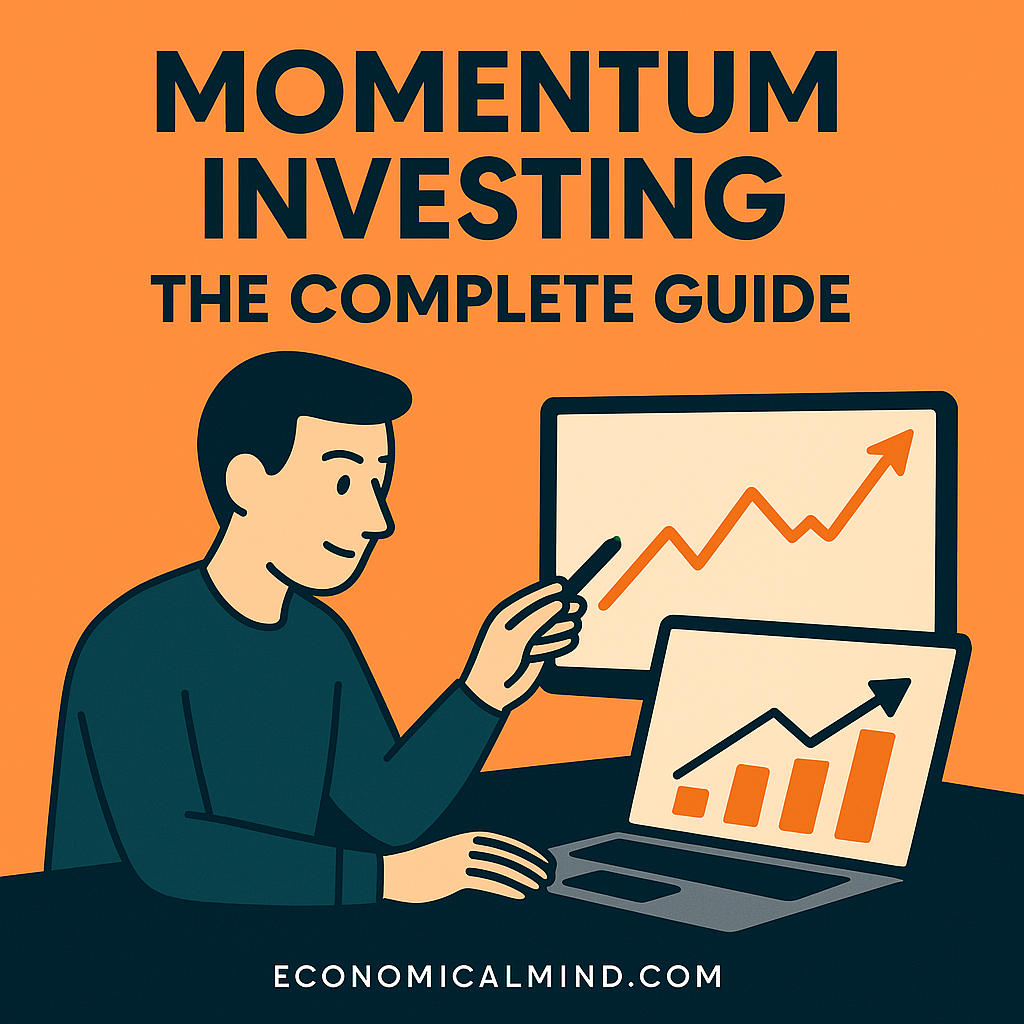
Momentum investing is a strategy based on a simple idea — stocks that are performing well tend to keep performing well, at least for a while. By riding short- to medium-term trends, investors aim to capture gains before momentum shifts in the opposite direction.
What Is Momentum Investing?
Momentum investing involves buying assets that have shown strong recent performance and selling those that have lagged. Instead of focusing on fundamentals like value or dividends, this strategy looks at price movement and market psychology.
Example:
If a tech stock has risen 20% in the past three months while similar stocks are flat, a momentum investor might buy in expecting the trend to continue.
Momentum strategies are used in both individual stock trading and quantitative funds that track performance patterns automatically.
Why Momentum Works
Momentum investing capitalizes on human behavior — optimism, fear, and herd mentality. When investors see prices rising, they tend to jump in, pushing prices even higher until sentiment shifts.
Research shows that momentum can outperform traditional strategies in certain market environments, especially when trends are clear and stable.
Pros of Momentum Investing
1. Potential for High Short-Term Returns
Momentum can capture strong gains during bull markets or uptrends.
Example: Stocks that surge early in economic recoveries often continue rising for months.
2. Data-Driven Decision Making
Momentum relies on measurable factors like price performance and moving averages, not emotions.
3. Works Across Asset Classes
The approach applies to stocks, ETFs, commodities, and even cryptocurrencies.
4. Avoids Stagnant Investments
You stay focused on what’s working — and cut underperformers faster.
5. Can Complement Other Strategies
Momentum can enhance diversification when combined with value or dividend investing.
Cons of Momentum Investing
1. Higher Volatility
When trends reverse, losses can come quickly.
Fix: Use stop-loss orders or trailing stops to protect gains.
2. Frequent Trading
Momentum requires regular monitoring and rebalancing.
Fix: Use ETFs or managed funds that automate the process.
3. Market Timing Risk
Momentum strategies can struggle in sideways or choppy markets.
Fix: Use technical indicators (like 50- and 200-day averages) to confirm trends.
4. Tax Implications
Frequent buying and selling can trigger short-term capital gains.
Fix: Hold momentum positions in tax-advantaged accounts when possible.
5. Emotional Challenges
Riding trends means staying disciplined when prices swing sharply.
Fix: Stick to rules-based entry and exit criteria.
Best Practices for Momentum Investing
1. Define a Clear Time Frame
Decide if your strategy focuses on short-term (weeks) or medium-term (months) trends.
2. Use Objective Indicators
Track performance using metrics like 3-month or 12-month returns, moving averages, or RSI (Relative Strength Index).
3. Set Entry and Exit Rules
Determine when you’ll buy and sell — and follow your system consistently.
4. Manage Risk with Diversification
Avoid over-concentrating in one sector. Spread across different industries or ETFs.
5. Combine Technical and Fundamental Checks
While price trends drive decisions, ensure the underlying assets aren’t fundamentally weak.
6. Rebalance Regularly
Review holdings monthly or quarterly to capture new trends and drop laggards.
7. Limit Emotional Trades
Follow data, not hunches. Backtesting your strategy builds confidence.
8. Watch Market Cycles
Momentum works best in trending markets, not in sharp corrections.
9. Use Tools and Automation
Brokerage platforms and ETF providers offer automated momentum strategies.
10. Stay Educated
Market behavior evolves — revisit your approach as new data and tools emerge.
Key Takeaway
Momentum investing rewards discipline and trend awareness. It’s not about predicting markets — it’s about following where the strength already is, and knowing when to step aside. With the right rules and risk management, momentum can be a powerful tool in an advanced investor’s toolkit.
